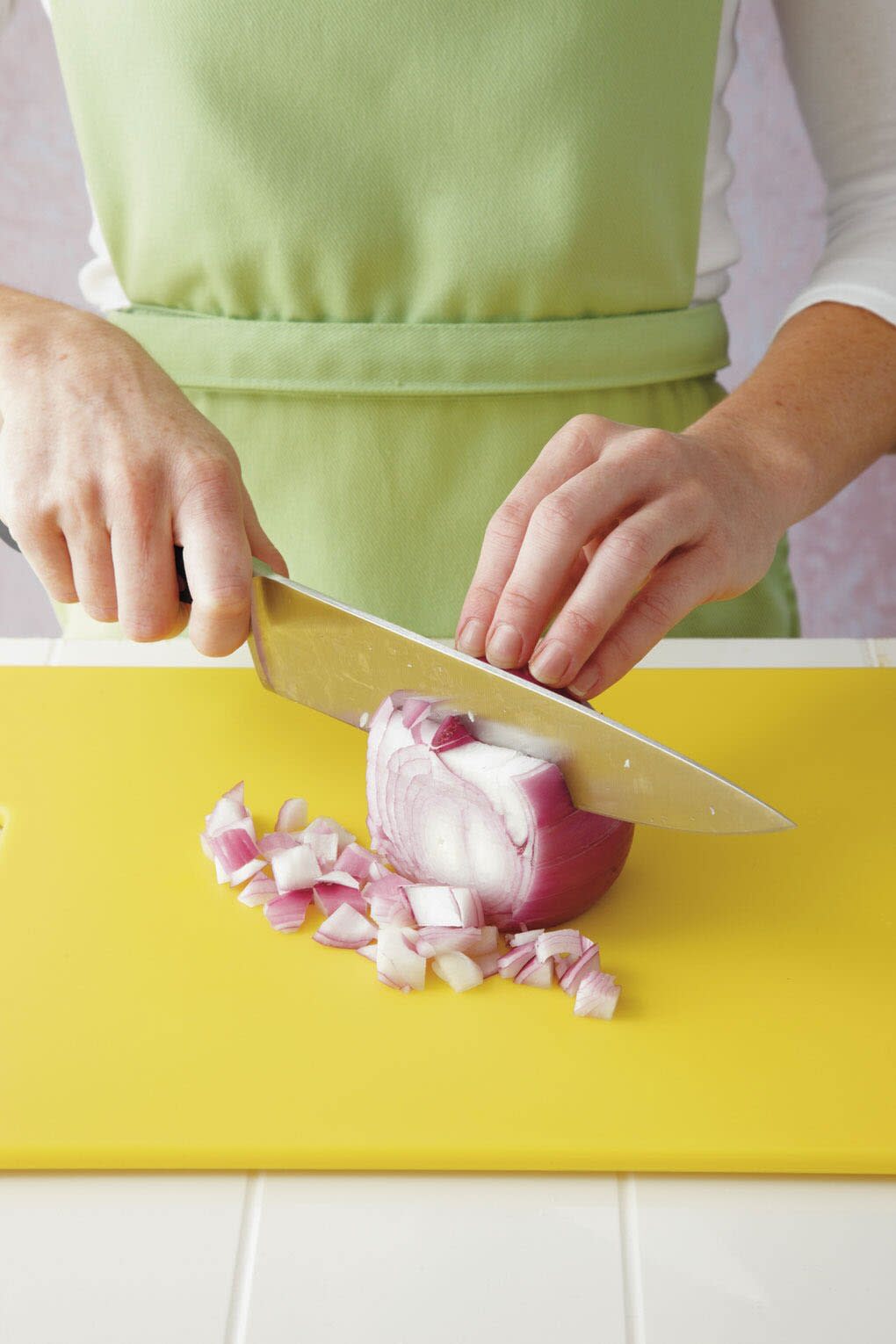Our All-Inclusive Guide To Knife Skills

Oxmoor House
Learn the difference between mincing, chopping, dicing, and more with this all-inclusive guide to knife skills. Read on so you you'll know exactly what type of cuts to make when preparing ingredients for recipes.
Coarsely chopped: Cut ingredients into large and often irregular pieces that range from 3/4 inch to 1 inch, but not perfectly squared.
Chopped:Cut ingredients into more uniform pieces that range from 5/8 inch to 1/2 inch, but not all exactly the same size or shape.
Diced: Cut ingredients into uniform square pieces, approximately 1/4 inch.
Finely chopped or Minced: We often use these terms interchangeably to mean cut ingredients into small bits that are about 1/8 inch or smaller.
Cubed: Cut ingredients into uniform square pieces of any specified size.
Julienne: Cut ingredients into thin, uniform matchstick strips.
Chiffonade: Cut ingredients, often herbs or greens, into thin ribbons. Stack several leaves, loosely roll them into a cylinder, and slice crosswise.
Zesting Citrus:
Always zest before you slice and juice or section the fruit.
A zesting tool, such as Microplane citrus zester, is inexpensive but a useful kitchen gadget. (You can also use the smallest holes on a box grater to do the job.)
Remove only the colorful outer layer, leaving the bitter white pith on the fruit.
Sectioning citrus:
Using a sharp, thin-bladed knife, cut a 1/4-inch-thick slice freom each end of fruit.
Place flat end down on a cutting board, and remove peel in strips, cutting from top to bottom, following curvature of fruit. Remove any remaining bitter white pith.
Holding peeled fruit in the palm of your hand, slice between membranes, and gently remove whole segments.
If you want to capture fresh juice as you work, hold the fruit over a bowl as you remove the segments.

